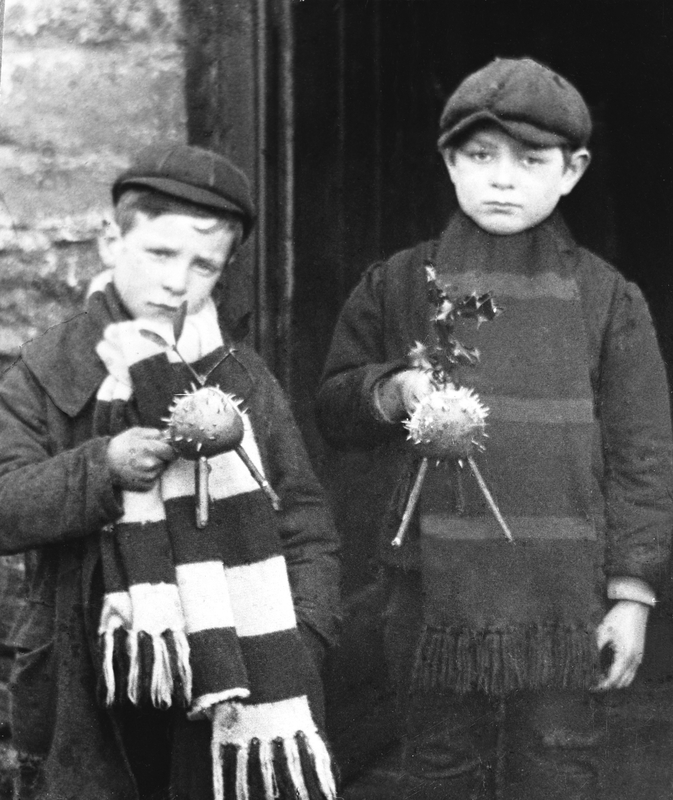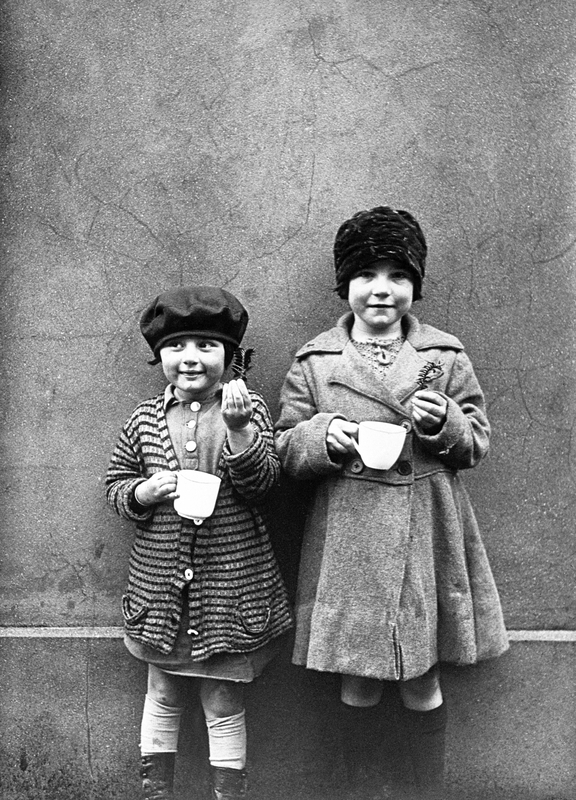New Year Traditions: Collecting Calennig
Happy New Year!
At one time in Wales – New Year’s festivities were even more important than Christmas. In fact, one resident of Cynwyl Elfed, Carmarthenshire, in the 1860s, said that the chief importance of Christmas was , ‘that it was within a week of New Year’s Day, the biggest day of the year’.
New Year has always been important in that it symbolized hope and starting afresh, every January 1st we make resolutions and try to turn over a new leaf. It’s not surprising therefore, that this period was associated with future fortunes.
It was said that one’s behavior at the beginning of the year was held to influence his fate for the proceeding twelve months. The custom of ‘letting in’ in the New Year is familiar throughout most of Britain and in Wales, the first visitor to enter somebody’s house was of great significance, depending on their sex and personal characteristics.
For instance, on New Year’s Day in Carmarthenshire and Pembrokeshire it was unlucky for a woman to see a woman first, and for a man to see a man first. People from Pencoed, near Bridgend, believed it bad luck to see a red-haired man first; in Pembrokeshire it was lucky to bring a fresh loaf into the house on January the first.
What is calennig?
A well-known Welsh tradition, still seen in some areas, is the collection of calennig (New Year’s gift) where children rise early and carry from door to door, as bearers of good luck, a decorated apple, pierced with three sticks and adorned with a sprig of box and hazelnuts.
The children usually sing a simple verse and in return usually received a gift or food or money for their troubles. Rhymes and songs were concisely worded and their message was to announce the New Year's arrival, to wish the family a prosperous twelvemonth, and to ask from it ‘calennig’ or (New Year's Gift).

Two boys collecting Calennig in Llangynwyd c. 1904-1910
Here is a verse sung in Cardiganshire and Pembrokeshire:
(I left my house today
With my bag and my stick,
And here is my message to you,
Fill my bag with bread and cheese.)
What is the New Year’s water ritual?
The New Year’s water ritual also took place in some parts of Wales, where children, after filling cups or small bowls with spring water, which they’d drawn from the well that morning, dipped into it a sprig of box, myrtle or mistletoe. This was then sprinkled either on grown ups hands and faces or around the house, in order to do away with the old year and usher in the new. The adults gave them a small gift in return of the sprinkling, which was commonly regarded as a sign of cleansing or or purifying.

Two girls at Tenby partaking in New Year's water ritual, 1928.
Comments - (5)
Wel meistres meistres codwch, cyfodwch cynnwch dan,
Mae heddiw'n flwyddyn newydd sbon, na bu erioed o'r blan.
Mae'r hen un wedi mynd, a mynd a llawer ffrind.
Mae wedi mynd a llawer ffrind, a'm gadael i a'r ol.
Am gadael i ar ol (x2)
Mae wedi mynd a llawer ffrind am gadael i ar ol.
au hefyd . Yr arferiad wedi gorffen Ers blynyddoedd bellach . Dysgodd fy nhad y penillion oedd ef yn arfer eu Canu . Deallaf ei ewythr oedd wedi eu hysgrifennu i'w chanu i don y " mochyn du ".
Wele eto flwyddyn Newydd. Ar y ddol ac ar y mynydd Flwyddyn lawn o bob benithion Fydde hon i chwi gyfeillion Flwyddyn lawn fyddo hon. Flwyddyn lawn fyddo hon
Rhowch galennig inni'n ddiddig A A gewch Flwyddyn Lawen Lon. Blwyddyn Newydd dda ( Gogledd Sir Benfro)
Rhowch galennig yn galonnog
I blant bach sydd heb un geiniog. !!
Mi gefais dipyn o siom symud i ardal Abertawe ar ol priodi a darganfod nad oedd yn arfer bellach yma i'm plant i.